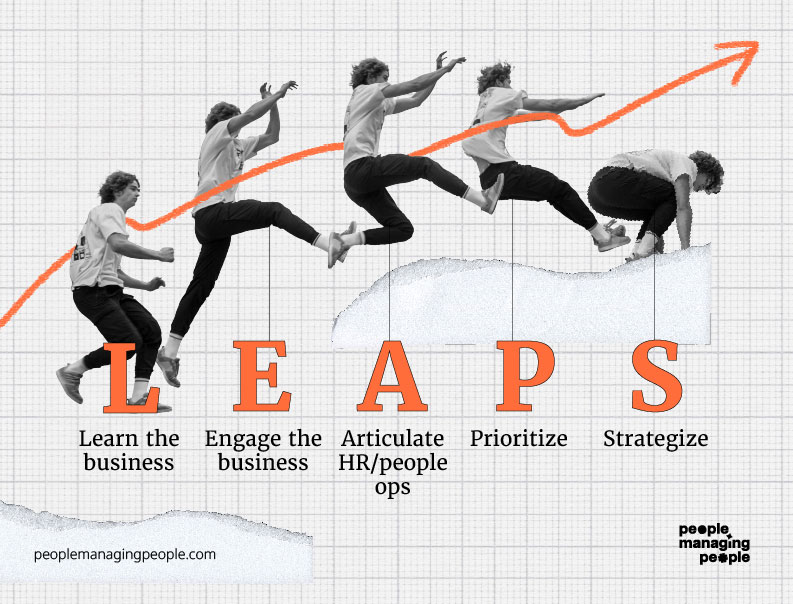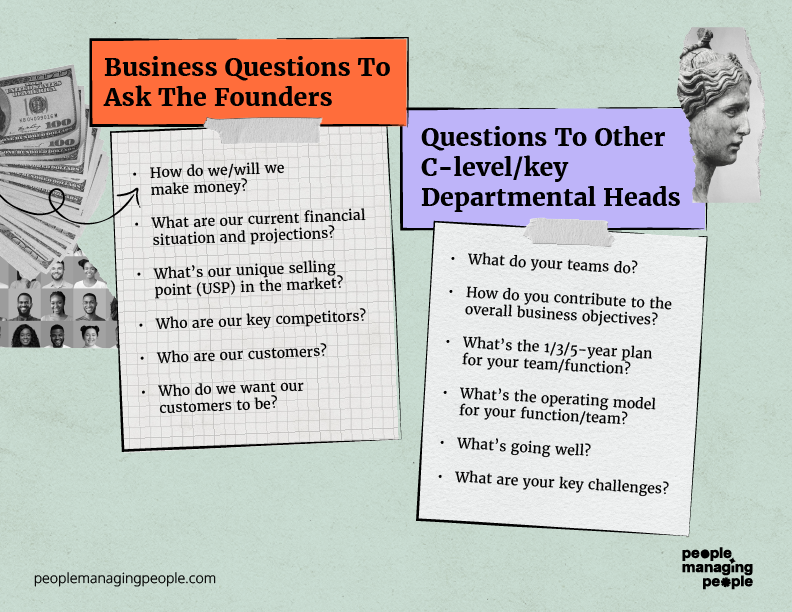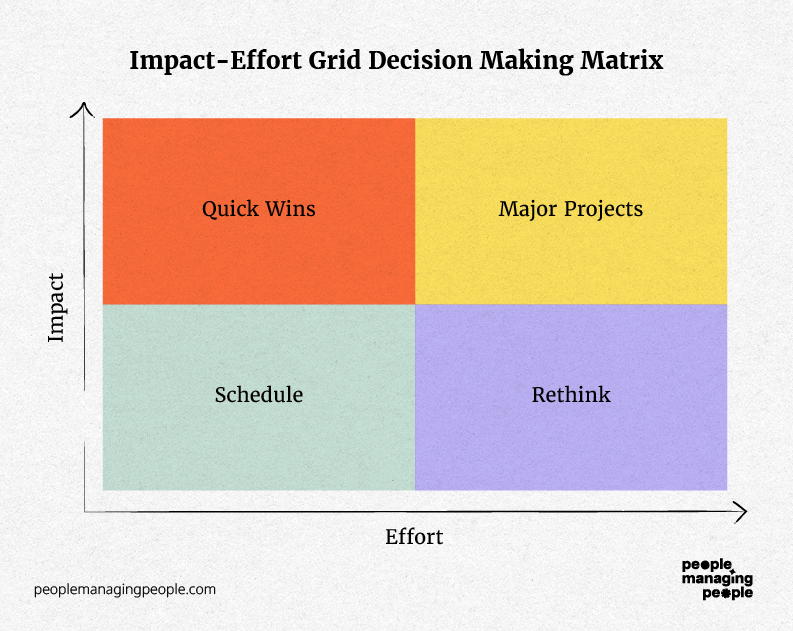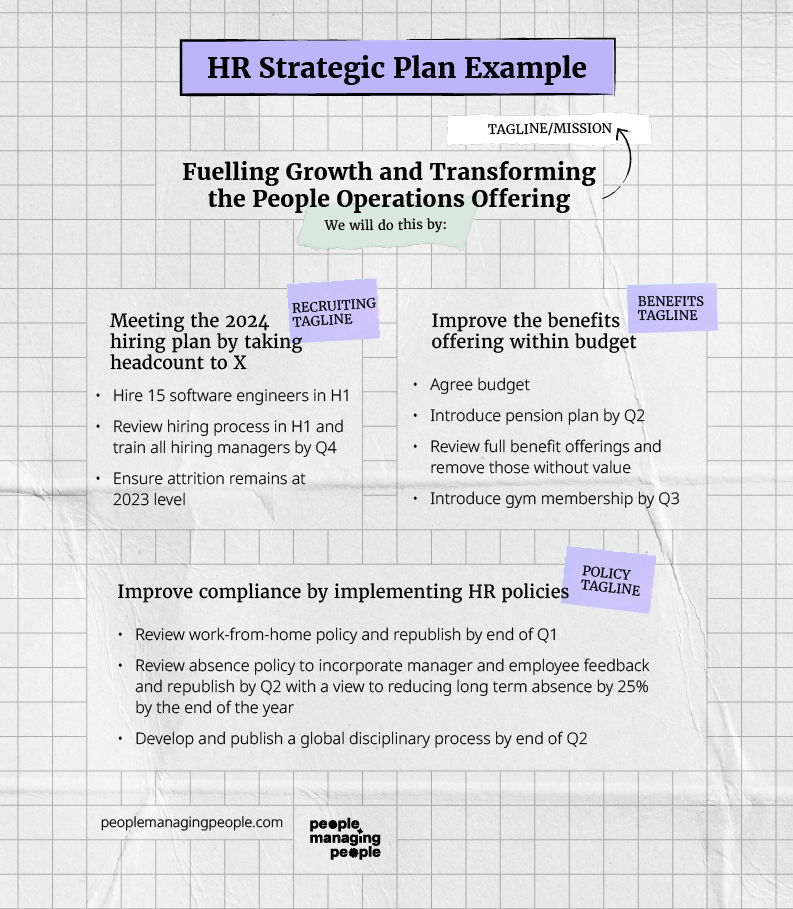Welcome to startup life!
The founders have identified the need to hire a people ops professional—this is a good omen.
Now it’s your job to work with them to lay the foundations of a talent management strategy that promotes sustainable growth and helps the organization achieve its mission.
There’s a lot of work ahead, but it’s exciting! Who knows where this journey will take you?
Maybe this is your first time working for a startup, or you’ve worked in one before but found it tough.
Either way, this resource aims to help you navigate those crucial first 3 months using the handy LEAPS framework.

Also included is additional advice for handling startup life including dealing with rapid change and interacting with founders.
Let’s leap in!
I’ll cover:
Stage One: Learn The Business
You’ve been given the job, this is a strong indicator that the founder(s) trust you.
But do they understand what you will need to know to become a trusted strategic partner?
Perhaps not.
It’s time to start having conversations, gaining business knowledge, and demonstrating how you’re going to be a key strategic partner of the business.
You’ll also need to set some expectations. You’re only one person and your health is important as well.
A great HR leader is curious about the business and strategy, not just the people. CEOs should recognize that their HR leader can act as a mirror to ensure the leadership team has the goals of the company in mind.
Doug Dennerline, CEO, Betterworks
If you get pushback from people (“This isn’t HR stuff”), explain that to be a truly strategic partner you need to gain a deep understanding of the business and the environment you’re operating in.
As well as the founders, it’s certainly worth booking some face time with managers and, as much as possible, individual contributors too.
Maybe the founders already have a laundry list of tasks you need to tackle (and hopefully there aren’t any fires), but you’re bringing a fresh perspective and can look at situations in a different light.
Every business is unique, so it’s important not to leap to conclusions about what the right approach is and, while challenges remain constant and some solutions look alike, you need to get the correct perspective first.
So, it’s worth putting time aside to take stock of the situation and understand the work your colleagues are carrying out and what makes them tick.
The best way to do this is to split out understanding the business from understanding the specific business challenges.

Business questions to ask the founders
Questions to other C-level/key departmental heads
This should give you a rounded perspective of the business model, where it is on its journey, and perhaps start to highlight any misalignments or challenges.
Another tip is to attend training sessions to learn about your industry and develop in any areas you think you might be lacking professionally. Maybe the organization operates in a different jurisdiction and you need to get up to speed on their employment law.
Stage Two: Engage The Team
You’ve gained a deeper understanding of the business, what it's trying to achieve, and some of the key challenges you have right now.
But they’ve brought you in as a people ops specialist so it's time to delve into the people and culture-specific challenges.
This necessitates asking a different set of questions to the same people and any additional managers.
Use the employee life cycle to shape these conversations:

Attract
Recruit
Onboarding
Development and performance management
Retention
Offboarding
General
Following this process, you’ll have a richer understanding of the business, wider industry, and the culture that already exists.
At this point, you also need to engage the wider workforce by utilizing employee surveys.
Structure this survey in the same way and ask similar questions but worded slightly differently for individual contributors.
You also need to try and build an HR metrics pack that gives you a picture of the organization to support the opinions voiced in the interviews and surveys.
It might be difficult to get the data, but it’s important to try and track back as far as you can to show trends and, going forward, be able to better demonstrate your impact on the business.
It doesn’t matter if you can’t get everything, get what you can and ensure you start to gather, or have a plan to gather what you can’t today.
Key priorities would be:
- Headcount over time
- Headcount by office and department/function
- Hiring and exit volumes over time
- Attrition
- Source of hire
- Reason for leaving
- Diversity and demographic data of current employee
This would give you a basic overview of what has been happening in the organization.
You can use all of this data to help identify your strategic priorities with an eye on cultivating your employer value proposition and employer brand.
Step 3: Articulate People Ops
Now you’ll have started building relationships and establishing people ops as a strategic function that is there to support talent development.
No doubt you view people ops as a key strategic function, but does everyone else?
There is a perception of HR as the ‘face of the company’, kind of like an extended legal team there to ensure compliance.
It’s time to demonstrate what you do!
Armed with your data from the interviews, surveys and HR metrics, get together with the founders and present the issues and inconsistencies you've learned about.
Using the employee lifecycle, lay out several pillars of what good people ops look like, explain to them what you can contribute to (and what you can't), and then contextualize this with the problems and potential solutions.
It’s also important to take on feedback from the CEO/founders about what they view as important and what they see as the key issues.
While we might strive to attack some of the more strategic challenges, we also have to make sure we deal with any key operational challenges as well.
At this point, you should have a clear view of what those challenges are, what’s most/least important to leadership, and what solutions you can provide.

Wish You Could Skip The Growing Pains?
Join the community of HR and business leaders sharing knowledge to supercharge their careers within rapidly-growing organizations.
Step Four: Prioritize
Using your research, expertise and feedback, it’s time to set some strategic priorities.
While the urge might be to overhaul everything from the ground up, see what needs immediate change vs what can be kept as a status quo even if it's a sub-optimum process for now.
Use your knowledge of the business goals and the current status of the company vs where you want to be and plot your ideas on the Ease/Impact matrix below.

Split your initiatives out into Quick Wins, Schedule, Major Projects and Rethink and present this back to the founders with timelines for those that are Quick Wins and Schedule.
You can also spend time discussing bigger projects, or those that come with a significant cost and/or the procurement of additional resources, to try and get leadership buy-in for those.
Take some time to let this sink in with all stakeholders. Check with the founders/CEO to see if anyone else has opinions on each matter and if it would be a good idea to involve them in the planning or execution stages.
When you’ve reached an agreement on a timeline and what should and shouldn’t be prioritized, you have your action plan to work on.
Step Five: Strategy
Here’s where you further cement your role as a strategic partner.
In step four you built a plan by aligning solutions to the problems that have been identified.
The next step is to visualize this into a wider HR strategic plan that you can share with the whole company.
Let’s examine some principles for doing this.
Firstly, I would recommend that you don’t hugely overthink this. You’re the first HR hire, and the company is in relative infancy, so keep the timeline horizon fairly short—I’d say 1-2 years with frequent reviews.
Your strategy should demonstrate how you’ll transform the people function from where it is today into something else in the future.
It needs a clear headline that links to the overall company strategy and can be your guiding light across all of the initiatives.
Then, by grouping together some of the other initiatives that you’ve agreed to undertake, you should be able to present a cohesive set of aims and some of the things you’ll do to get there.
Let’s imagine you’ve joined a company and they’ve recently raised, so growth in headcount and building some structure around policy, reward and benefits are key for now.
Some of the longer-term projects you’ve identified include performance management, compensation, and compliance.
Your strategy could look like this:

In doing this you should be able to show that the initiatives fit together to solve the most important people problems that in turn contribute to the wider business strategy.
As above, using an OKR-type methodology is useful in doing this as you’ve got a clear set of objectives and key results that will move you toward your overall goal.
The Startup Mindset
Things change quickly in startups and this can take some getting used to.
The environment is dynamic and exciting: ”Yes we can implement that quickly, let’s do it!” but, on the flipside, this can also be overwhelming.
Something to bear in mind throughout your startup journey is that projects are often iterative and take a minimum viable product (MVP) approach.
This term, borrowed from the product management world, essentially means creating a prototype of something you can use to gauge its usefulness before committing more resources.
The idea is based on user data and research (in this case the employee population) and its influence is growing in the HR space as well.
By getting something in place, perhaps a new performance management system that’s not as fully formed as you’d like, you can measure its effectiveness and use feedback to improve it over time.
He who hesitates is lunch. Don’t limit yourself with expectations of perfection. Dive in, iterate ideas and keep moving them along.
Cydney Roach, Edleman
Having said all that, while some startups may have an iterative model, others may have a longer-term problem-first approach.
Make sure you understand which camp the founders are in and what they value so you know how to bring initiatives to them.
One way to determine is to ask them directly if they prioritize having great processes that take longer to create or having most things in V1 that can be iterated later on.
Making it a binary choice usually gets them to think about it a bit more and not choose "Oh we want great processes super-fast".
Effective Communication
Constant change also impacts how you communicate with the wider employee population.
One tip is to get the founder(s) to communicate regularly, preferably weekly, about what they’re thinking about and be transparent about the state of the business. This could be through a newsletter or a short video recorded in a program like Loom.
A few things to coach them on here:
- Being authentic
- Not only focusing on successes but also the learnings from failures
- Reiterating the mission, vision and values
- Embedding that founder’s story into the fabric of the organization as its such a powerful tool when done well.
As we’ve become more remote in our style of working we’ve seen much more use of tools that help communicate key business information such as new joiners, leavers, and reminders.
Partnering with the senior leadership team to be clear on who is doing what is critical. For example:
- Do you have to introduce new starters or should that be the responsibility of managers?
- Can you get the founder to include reminders about setting goals for employees so it's framed in a business context?
All of these things differ from company to company and person to person, but understanding collectively what people need to know and then agreeing who will communicate what and when is critical—don’t just become an email newsletter writer.
Handling Difficult CEOs
When facing a period of change, a former leader I worked with would always say “What got us here might not get us there”.
It’s a famous maxim and really important to keep in mind when you’re working with founders and CEOs.
Often they’re carried on a wave of success into managing a growing business and the expectations from others can be intense.
Many leaders are more comfortable coding, selling, developing a product, or setting strategy than being the face of a company, so it’s really important to take the time to understand where they are most comfortable before issuing them a template of expectations.
Good CEOs share the trait of listening to people who are there to help them, so adopting a coaching style will likely produce good results in influencing them to your agenda.
If you’re struggling to engage with your CEO on your People agenda, revisit what you went through when you joined, play that back, show how your strategy supports their goals and how you’re working to support them. Then play back what you need from them in terms of your agenda.
I’ve found that being clear that most People agenda items lack credibility if the CEO won’t do them is a powerful tool for driving the right kind of behavior and being honest and straightforward about this can often get the attention on the topic in hand.
Other general advice
- Get some policies in place so that every employee request needn’t be handled as a one-off.
- Use tools like Tango to quickly document SOPs and document everything as you go
- Take advantage of the fact you're building a core business function and what this could mean for your career. Document your wins.
- Push back on tasks outside your professional remit as these will take time away from more strategic priorities.
A Supportive Community Of People Leaders
Hopefully this resource has increased your confidence to LEAP into your new startup role.
You can find further support and some ready-to-go templates in the People Managing People Community.
It’s a safe space for people ops professionals to share knowledge and expertise to develop in their careers and make greater impact in their organizations.
